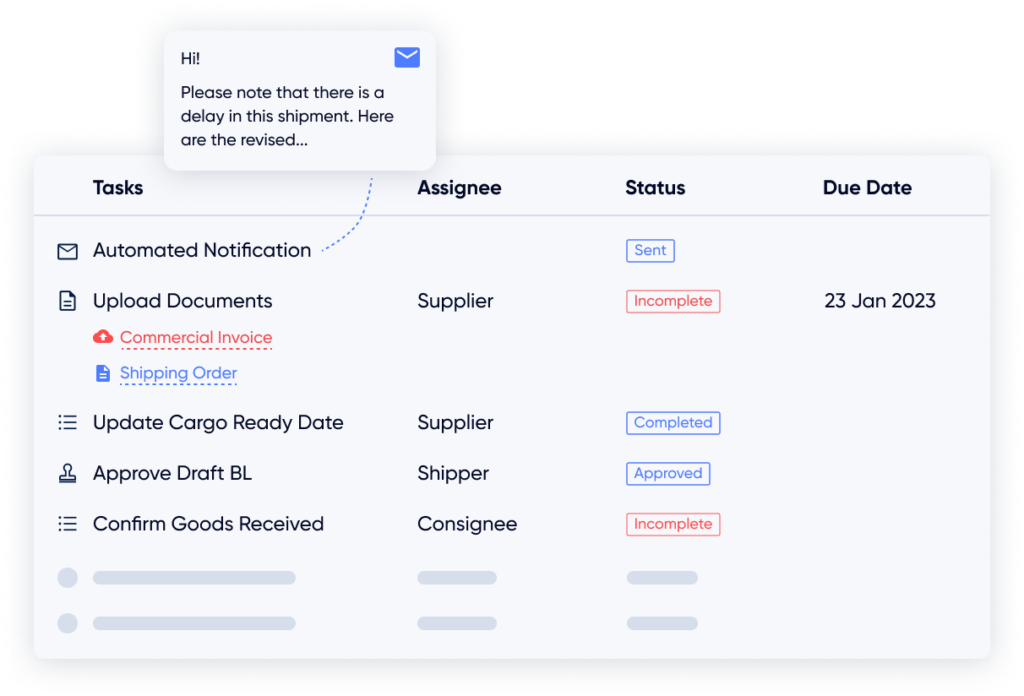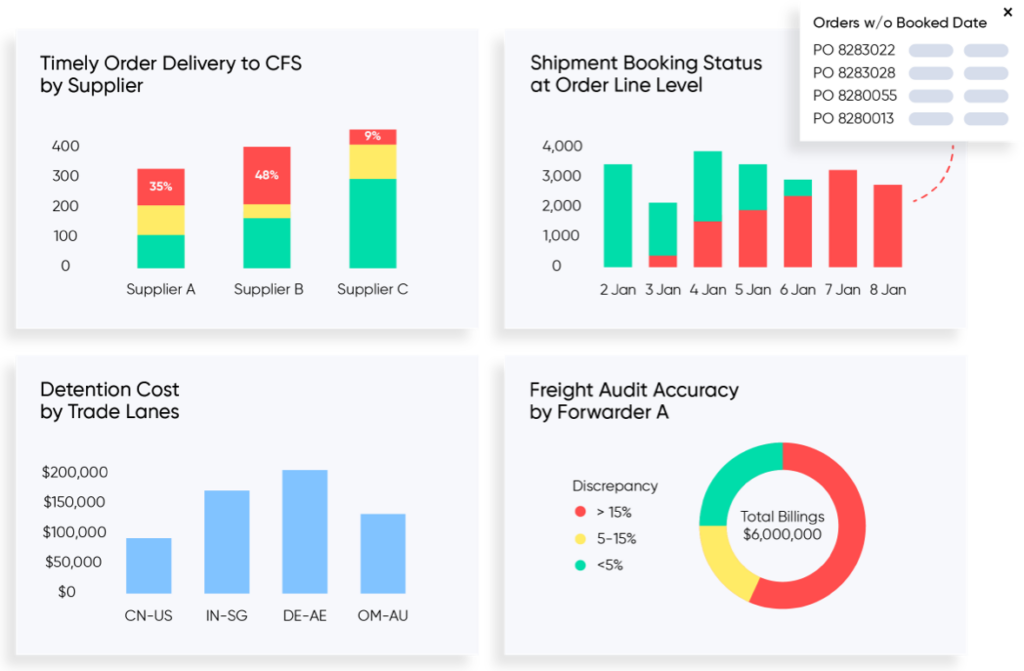Breaking information silos: How Tramés revolutionises freight operations
Written by Fiona Jackson
For many organisations, whether knowingly or unknowingly, a treasure trove of valuable information is trapped within the confines of their freight operations. Factors such as departmental barriers, disparate systems, and limited communication channels have led this wealth of data to become siloed, obstructing companies from realising the full potential of their data.
Different company departments – such as procurement, logistics, and finance – often operate independently. If they also rely on disparate systems and technologies, data duplication and inconsistencies can quickly become a problem. Even if these departments use the same systems, without seamlessly integrated workflows and strong communication, they could face issues of data inaccessibility and inaccuracy.
Information silos can also be created when there is a lack of standardised processes and communication channels between internal and external stakeholders, like carriers, customs brokers and suppliers. According to Alok Rajiv, the co-founder and CTO of logistics management solution provider Tramés Pte Ltd., these silos become particularly apparent when businesses do not consider external parties when investing in their IT systems.
“Vendors, customers and partners often have to fall back on phone calls, text chats, emails or unstructured modes of communication to operate.” Mr Rajiv told TechHQ. “Information hence becomes stuck in silos, with only some actually being transferred across, and that too comes with a high risk of human error.”

Tramés streamlines and automate routine work by ensuring that all stakeholders are kept up-to-date with the latest information.
Source: Tramés Pte Ltd
To address these data silos, companies can implement integrated freight management systems that facilitate seamless data exchange and real-time visibility across departments and the ecosystem. Establishing standardised processes, promoting multi-organisation collaboration, and investing in digital platforms can help break down the silos and enable more efficient and transparent freight operations.
“The easiest way to solve this problem is to bring a common layer across the chain,” Mr Rajiv told TechHQ. “A passive data lake will work, but it will lack actionability. A better approach is to introduce a common layer for unstructured communication – to be in charge of accumulation, validation and joining of these critical, but often forgotten-about, data points.”
This common layer can then become the sole source of data within the ecosystem across both digital systems and manual processes.
Mr Rajiv told TechHQ: “This layer, if created properly, can be ‘plug and play’ enough to ensure that the organisation can meet low-hanging, short-term goals with less change management first. But it can also allow more and more silo processes to be added into it, gradually increasing coverage through careful change management in the long term.”
One such solution is offered by Tramés. Its cloud-based global freight management platform can integrate with other in-house systems and third parties throughout the supply chain through APIs, effectively removing functional silos.
Data can be inputted by a user, batch upload or via integration, and subsequently open up new valuable information outputs. Tramés is equipped with dynamic analytics which can offer real-time insight into vendor performance, freight spend, speed and efficiency of logistics, and other areas of interest that can inform decision-making. Tramés customers have reported a 5 per cent decrease in freight audit spending thanks to these new metrics.

Analyse Data in Real Time based on your specific area of concern or focus that allows you to proactively identify gaps, risks, opportunities, and make informed strategic decisions.
Source: Tramés Pte Ltd
“Tramés works with customers with a very high disparity in the technology game since most enterprises are at different phases of the catchup journey,” Mr Rajiv told TechWireAsia. “We have solutions that enable us to connect using very traditional methods, like EDI/ANSI messages over email/FTP box, as well as very advanced solutions like event bridges through private VPN tunnels over the cloud. Even when it comes to where this data resides, we have done integrations to on-site data centres as well as customer-running ERPs on the cloud.”
Beyond providing insights into the freight management department, it offers real-time shipment visibility from supplier to consignee, and is one of the few platforms that utilises cargo and vessel tracking data from multiple sources. This can highlight unexpected cost-saving measures throughout the supply chain and improve company-wide operations.
The platform can also help automate frequent, repeatable processes within workflows to help logisticians manage multiple, complex systems as required. These include notifications for delivery updates or delays, which would otherwise involve countless emails. Reducing the human input through workflow orchestration also saves time, increases efficiency and reduces the scope for error.
These benefits ultimately translate into higher customer satisfaction and a competitive edge in a fast-paced, digital-first logistics industry.
A telecommunications company in Spain that recently implemented the Tramés platform said: “Tramés has helped us to map, align and simplify freight management processes across all our inbound entities. End-to-end freight management is now so much easier with technology, and resilience and governance have also improved significantly.
“Real-time visibility capabilities feed the digital freight ecosystem, and are coupled with connected partners and the workflow orchestration module. This means that exceptions in the transportation process are now proactively identified so that relevant teams can take the appropriate mitigating actions.”
If you would like to find out more about how Tramés can alleviate your siloed information issues, contact the team today.









